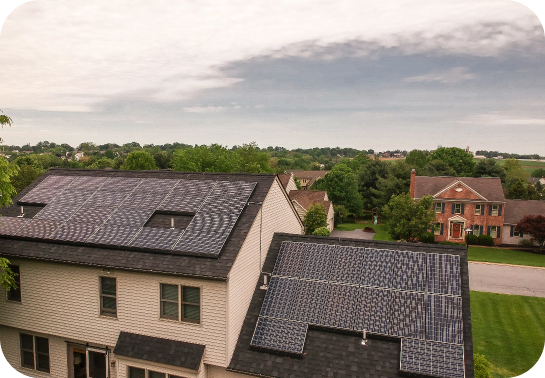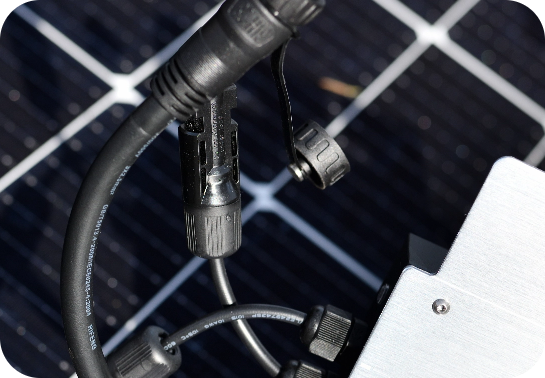How Much Does it Cost to Install Solar Panels?

Solar power has become popular in the United States, as it provides a reliable, environmentally friendly, cost-efficient source of electricity to any home. But despite all the benefits of solar power, the cost of installing solar panels is often the reason why people hesitate to switch.
So how much does it cost to install solar panels? The cost to install solar panels is computed per watt, and according to the National Renewable Energy Laboratory (NREL), the average cost to install solar panels for residential properties was $2.81 per watt as of 2020. The NREL also shows a decline in the cost to install solar panels in the last decade1.
Let’s dive into factors that can impact solar installation costs and how those costs can be reduced.
What Goes into Solar Installation?
Installing solar panels in your home may be one of the top home improvements you can make. Solar panel installation can come at a high price, though, and knowing the process of how the installation works can help you understand why.
If you are on the fence about switching to solar power because of the installation costs, remember that the initial cost to install solar panels depends on several factors, such as your location, home size, and supplier.


Your Location
Location is one of the biggest factors that affects how much it is to install solar panels in your home. The cost varies because of several factors.
Federal and State Incentives
Solar power is at the forefront of the battle against global warming, which is why both national and local governments are offering incentives to promote the use of solar power. These incentives may significantly lower the cost of installing solar panels and make solar power more affordable.
State Incentives
Many states offer some form of incentive to encourage the use of solar power in their area. These incentives may be in the form of rebates, tax credits, or performance-based incentives. For example, some states have a net metering policy that gives homeowners credits for excess energy that is sent to the main grid.
One example of a state incentive is the California State Initiative by the California Public Utilities Commission, which gives rebates of up to $1.10 per watt, depending on the size of the solar panel system in your home. To qualify for the incentive, you must hire a qualified professional to install your solar panels and comply with certain performance and safety standards.
Other states that offer solar power incentives are New York’s NY-Sun program, Massachusetts’ Solar Massachusetts Renewable Target program, and Colorado’s Solar Rewards program.
Federal Solar Tax Credit
The federal government also provides incentives for using solar power through the Federal Solar Tax Credit or Investment Tax Credit (ITC). The Federal Solar Tax Credit allows you to deduct 30% of your solar power installation cost from your federal taxes. Initially, it was scheduled to decrease to 22% in 2023, but the Inflation Reduction Act of 2022 extended the 30% credit to 2032.
Your Home
When you ask, “How much does it cost to install solar panels?” one thing you need to consider is your home. Some of the household factors that influence the cost to install solar panels include:


Hardware Costs
One major factor affecting solar panel installation costs is the hardware and materials needed. A solar panel system consists of several parts, and your overall cost to install solar panels in your home depends on the type and brand of hardware you choose.
Type of Panels
Generally, more expensive solar panels are longer lasting, higher quality, and more efficient, like monocrystalline panels. However, there is a cheaper alternative in polycrystalline, which is slightly less efficient, or thin-film solar panels. When choosing the type of panels for your home, consider your budget, electricity needs, and the location or roof space.
Brand
As with any commodity, brand affects the price of solar panels. Some brands are known for their quality and efficiency. However, they come at a steeper price. Consider your budget and electricity needs when choosing solar panels for your home.
Equipment Quality
Other components in a solar panel system also affect the cost, such as inverters and electrical components. Each of these has its own brands and models that differ in price. The overall cost of your solar panel installation depends on the equipment you choose to use.
Determining How Many Solar Panels You Need
The number of solar panels you need significantly affects your overall installation cost. More panels would mean more equipment, longer or more labor charges, and even higher fees for permits.
To determine how many solar panels you need for your home, consider the size and your household’s electrical consumption. To determine your household’s electrical needs, check your electricity bill for the previous year. Compute the average daily usage in kilowatt-hours and multiply it by 1,000 to convert it to watts.
Next, check the solar panels you are considering, particularly their output in watts. Divide your average daily usage in watts by the solar panels’ output to determine how many panels you may need. Remember, though, that the output stated in the solar panel specifications does not account for certain factors, like panel efficiency, location, and shade.

Payment or Purchasing Options
If you are considering installing solar panels, there are several payment and purchasing options you can choose from, such as leasing, a power purchase agreement, or buying them yourself and financing the panels.
Consider each option’s gross and net costs. Gross costs include the cost to install your solar panels, the hardware necessary, and any other fees. Net costs take into account any applicable incentives or tax credits.
Purchasing outright
The major benefit of buying your own solar panel system is complete ownership of the system. This also means you are solely responsible for all the maintenance and repairs, with higher start-up costs. However, you can use the federal tax credit and other incentives to reduce the overall cost. Buying your own solar panel system provides the lowest net cost over the system’s life.
Financing or leasing
If you can’t afford to purchase the entire system upfront, look into solar financing options. Some solar providers, like Axia, have solar financing partners that allow you to make monthly payments on the system with interest until it’s paid off. Leasing a solar panel system can be cheaper upfront, and the installer is responsible for maintenance and repairs. This net cost of leasing a solar panel system tends to be higher, and the other downside is that you are not entitled to tax credits or incentives.
Power Purchasing Agreement (PPA)
A PPA, similar to leasing, requires a monthly payment. The main difference is a PPA’s monthly fee is based on the energy produced by the system, as opposed to the fixed monthly fee when leasing. Also, similar to leasing, PPA does not entitle you to any incentive or tax credits, resulting in higher net costs.
Get a Solar Panel Installation Cost Estimate for Your Home
With careful consideration of the factors above, homeowners can determine the number of solar panels needed and explore different payment options, including outright purchasing, financing, or leasing. With the right knowledge and support, going solar with a reputable provider like Axia can be a sustainable and economically viable choice for any homeowner.
Frequently Asked Questions About Solar Expenses
Have Questions? We’re Here to Help
Maintaining a solar panel system is simple and can be done by you, the homeowner. After installing solar panels, maintenance is often minimal and includes cleaning the panels to remove any debris or dirt that lowers their efficiency. Solar inverters may also need regular inspection and care to ensure they work properly. Fortunately, solar panel maintenance tends to be more cost-efficient than maintaining traditional electrical systems.
- https://www.nrel.gov/solar/market-research-analysis/solar-installed-system-cost.html ↩︎